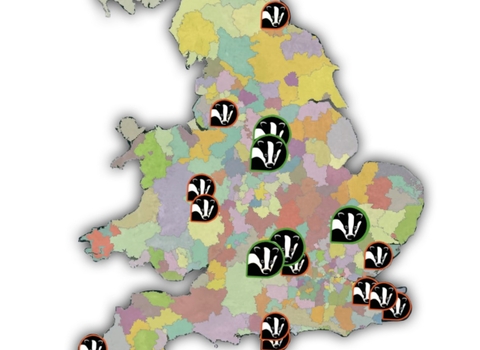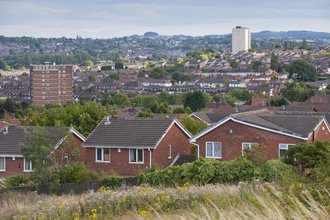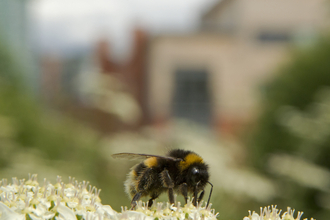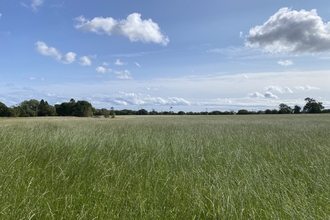Biodiversity Net Gain (BNG) is an approach to new development that aims to leave nature in a measurably better state than it was found.
Wildlife Trusts across England work with developers to deliver Biodiversity Net Gain end-to-end, from the first conception of a new development until after its completion.
Our approach to Biodiversity Net Gain is characterised by seeking the best, additional gains for nature, participation of local communities and desirable developments for people to live and work within.
End-to-end Biodiversity Net Gain services
The majority of Wildlife Trusts across England offer Biodiversity Net Gain services to developers from strategic consultancy to off-site habitat units. To find out more about Biodiversity Net Gain in your area, find your local Wildlife Trust here. If you are a nationwide developer looking for a nationwide Biodiversity Net Gain solution, contact us below.
Our Biodiversity Net Gain sites
With 75 sites either on the Biodiversity Gains Register, in development, or proposed across England, we have a huge variety of habitat units for sale across various Local Planning Authorities. It is therefore likely The Wildlife Trusts will be able to help you with your habitat compensation obligations. Contact us today to start a conversation about your BNG needs.
Explore our habitat banks

Map of registered BNG sites
The BNG map provides a publicly accessible, spatial view of all off-site locations currently registered on the Biodiversity Gain Sites Register, as published by the Department for Environment, Food & Rural Affairs (DEFRA). It is updated daily to reflect the most recent entries and changes to the national register.
'Gold standard' Biodiversity Net Gain
If done well, Biodiversity Net Gain offers a positive step forward in the way we think about development and nature in a more integrated way. That’s why we strive to deliver a ‘gold standard’ of Biodiversity Net Gain that ensures real long term gains for nature, as well as desirable developments that are home to happy and healthy communities that are connected to nature.

© Jon Hawkins - Surrey Hills Photography
- We go beyond the minimum 10% and strive to deliver at least 20% Biodiversity Net Gain.
- We strategically target our Biodiversity Net Gain at Local Nature Recovery Strategies as part of a bigger picture of nature’s recovery.
- We secure these areas beyond the mandatory 30 years, making sure Biodiversity Net Gain is additional to existing mechanisms, funding and initiatives.
Biodiversity Net Gain explained
What is Biodiversity Net Gain?
Biodiversity Net Gain is an approach to land management that aims to deliver measurable improvements for nature by creating or enhancing wildlife habitats, rivers and streams and hedgerows, in association with a new development. Improvements to biodiversity must be ‘additional’: this means new developments must leave nature in a better state than what was there before.
The Wildlife Trusts have been influencing the evolution of Biodiversity Net Gain for well over a decade – from the very early thinking and piloting in 2012 around measuring and offsetting the losses of nature to development, to testing and contributing to the multiple iterations of the Defra metric and advocating for clear commitments on Biodiversity Net Gain in legislation. Locally, Wildlife Trusts have been influencing the inclusion of Biodiversity Net Gain policy in local plans and advocating for voluntary Biodiversity Net Gain for many years. More recently, many Wildlife Trusts have been readying themselves as high quality habitat providers for Biodiversity Net Gain.
How will Biodiversity Net Gain affect businesses?
The new Biodiversity Net Gain regulations came into effect in early 2024. Developers in England must deliver a minimum 10% increase in biodiversity for new developments, for at least 30 years. For Town and County Planning Developments this came into effect in February 2024, followed by small sites from April 2024 and will come into effect for Nationally Significant Infrastructure Projects (NSIPs) from late 2025. This requirement can be achieved through the development of nature on the site itself, through the development of nature at other sites, or, as a last resort, through the purchase of statutory Biodiversity Net Gain credits.
What Biodiversity Net Gain services do The Wildlife Trusts offer?
Consultancy and land management services
Our experts in ecology, land management and landscape design, provide advice tailored to local conditions. Our Biodiversity Specialists conduct baseline Biodiversity Net Gain Assessments and advise upon the options available to developers to achieve their Biodiversity Net Gain target, offering pragmatic and responsive solutions to risk management and planning obligations.
Our consultancy and land management services are typically offered to developers either by the local Wildlife Trust, or the local Wildlife Trust's consultancy in collaboration with the Trust.
Contact us about BNG consultancy services
Off-site solutions
It is not always possible to deliver Biodiversity Net Gain on-site. In these circumstances, Wildlife Trusts are in a unique position to provide offsite habitat compensation that aligns with local green infrastructure plans and Nature Recovery Networks.
Our 'habitat banking' approach to Biodiversity Net Gain delivery allows for the creation of strategically located habitats that support large-scale habitat creation projects delivering a range of other co-benefits for wildlife and society.
Habitat banking also enables the creation of habitats before any nature loss is caused by development and creates a pipeline of biodiversity credits ready for the development sector - delivering more for nature and providing a greater level of security for buyers.
Does Biodiversity Net Gain have to be delivered on the site of a new development?
There are three ways in which Biodiversity Net Gain can be delivered:
-
Firstly, through on-site enhancement and restoration of biodiversity (within the red line boundary of a development site).
-
Secondly, if all of the Biodiversity Net Gain cannot be delivered on site , off-site biodiversity gains can be considered. This can either be on land owned by the developer, outside of the development site or through buying off-site biodiversity units.
-
Finally, if developers cannot achieve on-site or off-site Biodiversity Net Gain, they must buy statutory biodiversity credits from UK Government. This should be considered a last resort.
All three methods can be used, however they must be considered in order.
All habitats created for Biodiversity Net Gain must be managed and monitored for 30 years to achieve and demonstrate the planned uplift. When delivering Biodiversity Net Gain on-site developers must carefully consider how the Biodiversity Net Gain gains can be managed, monitored and protected (e.g. ensuring these areas will not be needed for future development) over the 30 years. When considering on-site gains it is also very important to consider how additional on-site pressures, for example from increased footfall, dog walkers and other human usage, can be balanced and accounted for within the planned uplift.
What are the legal requirements for offsite Biodiversity Net Gain?
The delivery of off-site Biodiversity Net-Gain must be secured with a comprehensive Habitat Management and Monitoring Plan (HMMP) and legal agreement. The legal agreement can either be in the form of a Section 106 (S106) with the Local Planning Authority or through a Conservation Covenant with a Responsible Body. Once the HMMP and legal agreement are in place, the off-site Biodiversity Net Gain must then be registered on Natural England’s BNG register, that opened in February 2024. Once the site is registered Biodiversity Net Gain units can be sold and included within planning permissions.
Does Scottish and Welsh planning policy feature the Biodiversity Net Gain principle?
“Securing positive effects for biodiversity” is one one of six statutory outcomes for the National Planning Framework introduced by the Planning (Scotland) Act 2019. Scotland however does not yet have an agreed standard approach to measuring biodiversity gains, with NatureScot currently developing a system that reflects Scotland’s legislative, policy and environmental context.
In Wales, National Planning Policy requires that every development delivers a Net Benefit for Biodiversity, leaving biodiversity and ecosystems in a better state than before. Welsh planning policy does not specify how much benefit should be delivered, or how long it should be maintained, and it is up to each local planning authority to decide what is appropriate and proportionate to the scale of the development. The Wildlife Trusts in Wales are working to develop nature positive solutions for developers in Wales.





